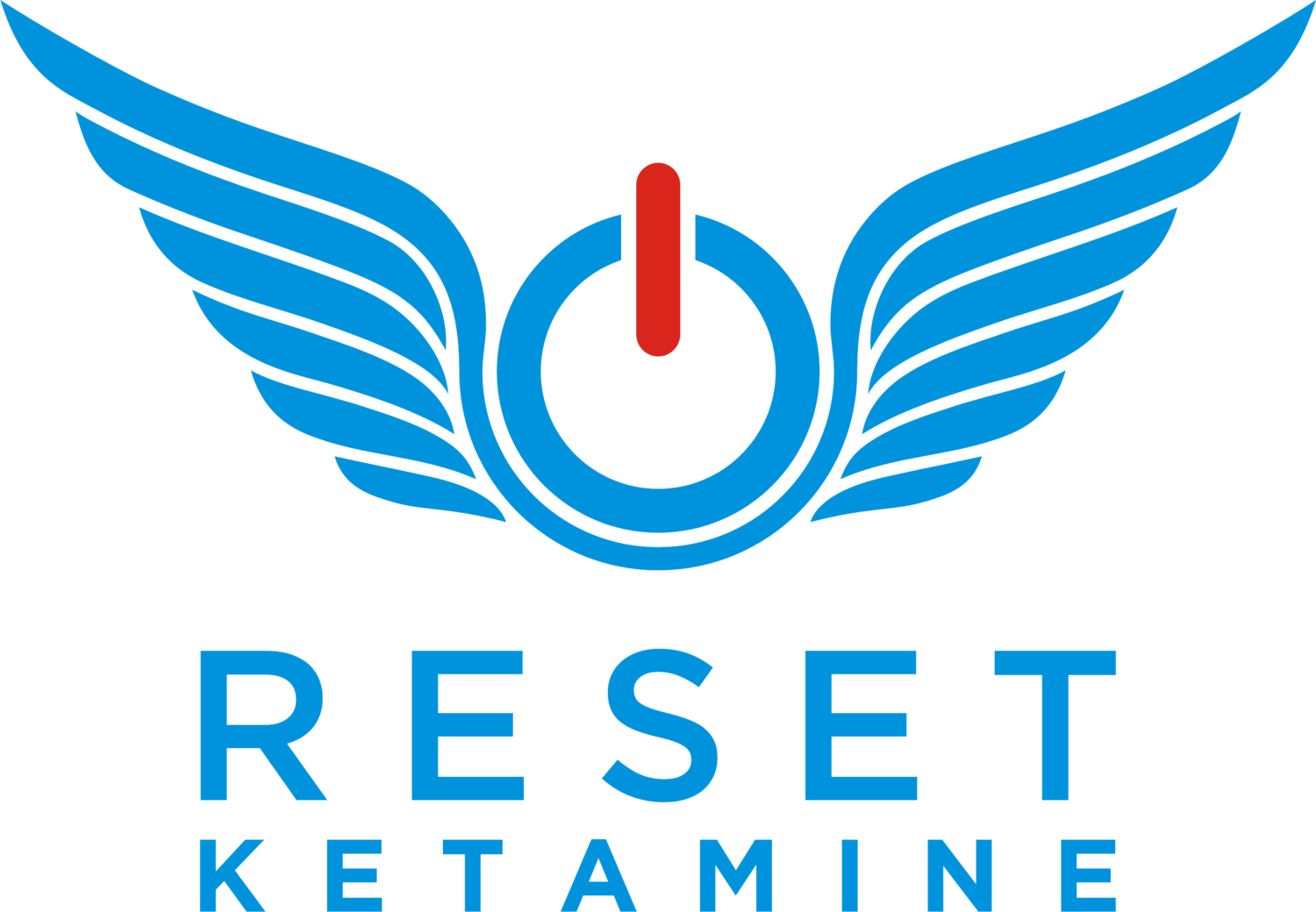Ketamine infusions are becoming increasingly popular due to the fact they may rapidly treat anxiety, chronic pain disorders, PTSD, OCD, and treatment-resistant depression. You may be curious about what the experience of a ketamine infusion will be like, especially since there is a lot of confusing and misleading information out on the internet. Well, we got you covered in this post!
What does a ketamine infusion feel like? Depending on the dose of ketamine and for how long you receive the infusion, you may experience anything from being more aware of how your body feels, quieting of the mind, feelings of love and gratitude, all the way to feeling connecting to the Universe/God, death of your ego, and reliving past experiences from a different perspective.
Ego death, connection to God, increased body awareness? What’s that all about? And why does this happen when you get ketamine infusions? The simple answer is: ketamine’s dissociative properties.
Ketamine-induced Non-Ordinary States of Consciousness - aka “What it feels like to get ketamine infusions”
Ketamine has a long history of use as an anesthetic agent for medical procedures and surgery. How ketamine allows for sedation during these procedures is due to its dissociative property. This dissociative property “disconnects” the mind from body by disrupting the action of the neurotransmitter (aka brain chemical) glutamate. When ketamine is used for non-anesthetic indications (KNAI), it can create novel experiences for the patient. Because of this property, patients become dissociated and can have a “ketamine-induced non-ordinary state of consciousness.” According to Dr. Eli Kolp there are 4 types of experiences aka states (1).
EMPATHOGENIC EXPERIENCE
Awareness of body
Comfort and relaxation
Reduced ego defenses
Empathy, compassion, and warmth love and peace
Euphoria
Mind is dreamy with non-specific colorful visual effects
OUT-OF-BODY EXPERIENCE (OBE)
Complete separation from one’s body
Significantly diminished ego defenses
Visits to mythological realms of consciousness
encounters with non-terrestrial beings
Emotionally intense visions (e.g., deceased relatives, spirits)
Vivid dreams of past and future incarnations
Re-experiencing the birth process
NEAR-DEATH EXPERIENCE (NDE)
Departure from one’s body
Complete ego dissolution/loss of identity
Experienced physical (body) and psychological (mind) death
Experience being a single point of consciousness simply aware of itself
Reliving one’s life aware of how actions have affected others, with moral judgment of self
*Learn more about ketamine and NDE’s here.
EGO-DISSOLVING TRANSCENDENTAL EXPERIENCE (EDT)
Ecstatic state of the dissolution of boundaries between the self and external reality
Complete dissolution of one’s body and self (soul)
Transcending normal mass/time/space continuum
Collective consciousness
Unity with Nature/Universe
Sacredness
During these experiences, a patient may relive memories, emotions, and stories which may contain unprocessed and/or repressed feelings. While this may not sound very appealing, this release allows for an opportunity to work through or process these past experiences and feelings.
What a patient experiences during the ketamine infusion is very much dependent on the amount of ketamine administered during the infusion. When a patient is first getting an infusion, often the initial dose will be at the lowest recommended amount (usually 0.5 mg of ketamine for every 1 kg of the person’s weight). At the lower doses, one would less likely experience the out-body experience, near-death experience, or ego-dissolving transcendental experience.
Ketamine’s Dissociative Psychotropic Effect Results In Better Outcomes
Is this dissociation and non-ordinary states necessary for recovery and healing? Some doctors and providers who administer ketamine infusions believe that this is a side effect of ketamine, and that the real change and improvement in symptoms are a result from the the biochemical, neurological phenomena (i.e neuronal changes). In a study by Lukenbaugh et al, the data from 108 patients with treatment-resistant depression and bipolar disorder who received a single subanesthetic ketamine infusion were analyzed. The study showed people had a more robust and sustained antidepressant effect when they experienced dissociation during the ketamine infusion compared to those who did not (2).
In another study, by Hansen et al, researchers recruited seven volunteers who received between 5 and 12 doses of ketamine over a period of 18 months (3). Participants’ experiences, although varied, were intense. Participants were observed experiencing pleasure, expressing anxiety, or even laughing or crying. All of the subjects experienced a dreamlike state and various ketamine-induced non-ordinary state of consciousness. All of the subjects reported that these ketamine-induced experiences were important, to varying degrees, in their personal self-understanding.
Studies like these point to just more than the biological-neurochemical effects of ketamine in allowing for improvement in pain, anxiety, and depression symptoms. The new perspectives, insights gained, and releasing of repressed memories and emotions coupled with the biological changes probably contribute to why ketamine is so much more effective than other traditional treatments.
Dealing with Challenging Experiences During Ketamine Infusions
Feeling connected with the universe and being in a calm dream like state sounds nice, but what about experiencing your own death or reliving a past traumatic event? Those type of experiences can bring up a lot of emotion and for some can be traumatizing again. So how does one handle these challenging and frightening experiences?
By having a ketamine infusions with a doctor who understands the potential of these kind of experiences and one whom you feel safe with and trust, while understanding the concept of “set and setting.”
“Set” is short for “mindset”
Preparation and being in a calm and centered mindset before the infusion are critical. You want to have a specific intention, a goal or way of being before, during, and after the infusion. Immediately before the treatment begins, really see and feel yourself being and having the intention that you set. For example, you could set the intention of being joyous, peaceful, or pain-free. This intention will be the foundation of the ketamine experience. Focusing on your intention while you are in a challenging experience can be the anchor you need on the journey of healing.
“Setting” refers to the environment where you are getting your infusion
You not only need to know that you are safe, but also feel safe and supported, during your infusion. Knowing you can trust the people around you will put your mind and body at ease. Knowing you are not alone, and can ask for help when you are feeling challenged or scared can create the ideal experience for a therapeutic response. Empathetic staff who can help support you through the experience and a peaceful location all contribute in making the optimal setting for your ketamine treatment.
Learn more about the “Set and Setting” as well as How to Handle Challenging Experiences With Ketamine here on our blog
Getting Ketamine Without the Dissociative Psychotropic Effect
As mentioned before, some ketamine provider believe this non-ordinary state experiences are a negative side effect of ketamine. They view the challenging experiences as side effects which should be treated or minimized by using other medications. For example, some clinics may offer to pretreat or simultaneously give midazolam (aka Versed), this approach will help with in reducing these challenging psychotropic experiences and feelings but may also decrease the memories of the experience. Benzodiazepines, a class of medications that midazolam belongs to, are classically used to treat acute anxiety.
While people see these experiences as a nuisance or something to be treated in themselves, others clinicians believe the very experience midazolam is used to reduce is actually part of what helps with the treatment of pain, anxiety, and depression. Eliminating this experience, some would argue may result in less of a therapeutic effect.
That being said however, the widely accepted protocol for the treatment of complex regional pain syndrome (CRPS) (learn more about this condition here), involves high dose ketamine over several hours per infusion (unlike lower dose ketamine for a short duration in the treatment of depression and anxiety) along with midazolam. The idea of 4-5 hours dissociated in a ketamine induced non-ordinary state sounded like a nuisance for those who developed this protocol! Despite this use of midazolam with the infusion, many people with CRPS are finding relief like they never had before now with ketamine. At the end of the day, this topic in particular needs further research to better understand.
Related Questions
How quickly will you feel the effects of ketamine during the infusion? Depending on the amount of ketamine you will receive and how sensitive you are to the medicine, you can begin to feel the effects within minutes. The effects will be gradual and will build with time. In other words, as the infusion progresses the more ketamine enters your system.
How long does the ketamine induced non-ordinary state last? The half-life of intravenous ketamine is 45 minutes (4), meaning it takes 45 minutes for half of the ketamine to be cleared from the body. What we have observed in our patients is once the infusion in stopped, the experiential effects can continue for another 30 minutes to an hour after.
Will you always have the same experience with each ketamine infusion? Each experience had during the ketamine infusion is unique between patients and between infusions. How the experience goes depends on where the mindset of the patient. Some believe that the type of experience you experience, for example feeling connected to the Universe or relive a past experience, depends on what your mind is ready for or needs to experience.
Learning something new in our blog post? Please share this post if you enjoyed and were educated by it! If you have any questions or comments please leave them below.
References:
Kolp, Eli & L. Friedman, Harris & Krupitsky, Evgeny & Jansen, Karl & Sylvester, Mark & Young, Matthew & Kolp, Anna. (2014). Ketamine Psychedelic Psychotherapy: Focus on its Pharmacology, Phenomenology, and Clinical Applications. International Journal of Transpersonal Studies. 33. 84-140. 10.24972/ijts.2014.33.2.84.
Luckenbaugh DA, Niciu MJ, Ionescu DF, et al. Do the dissociative side effects of ketamine mediate its antidepressant effects? Journal of affective disorders. 2014;159:56-61. doi:10.1016/j.jad.2014.02.017.
Hansen, Gustav, et al. “The Psychotropic Effect of Ketamine.” Journal of Psychoactive Drugs, vol. 20, no. 4, 1988, pp. 419–425., doi:10.1080/02791072.1988.10472511.
Rosenbaum, Steven B. “Ketamine.” StatPearls [Internet]., U.S. National Library of Medicine, 21 Feb. 2019, www.ncbi.nlm.nih.gov/books/NBK470357/.











Learn how ketamine therapy affects PTSD, when it may worsen symptoms, and how alternatives like the stellate ganglion block can offer relief.